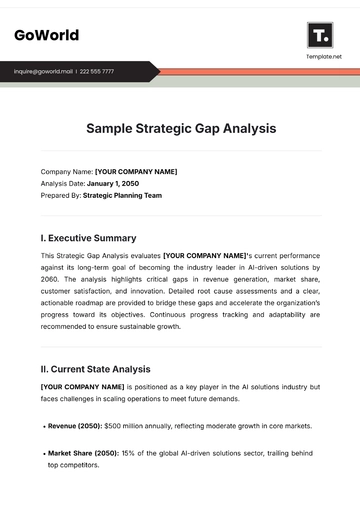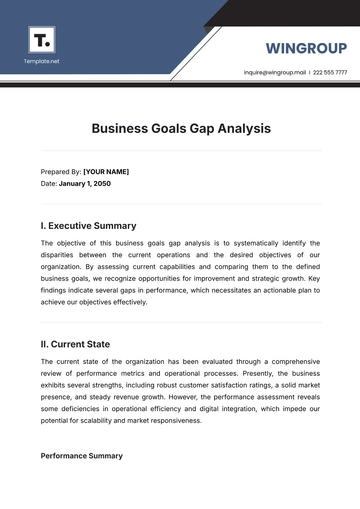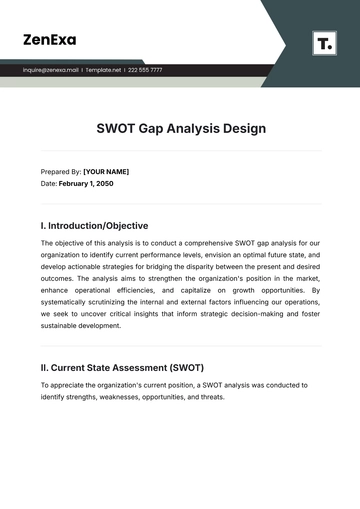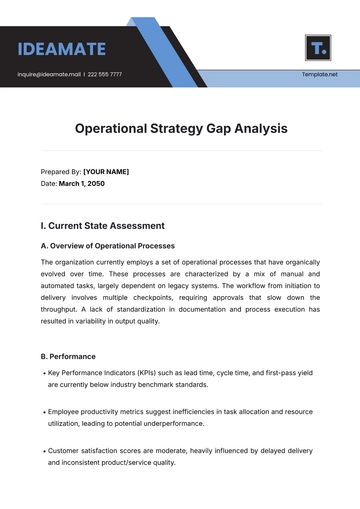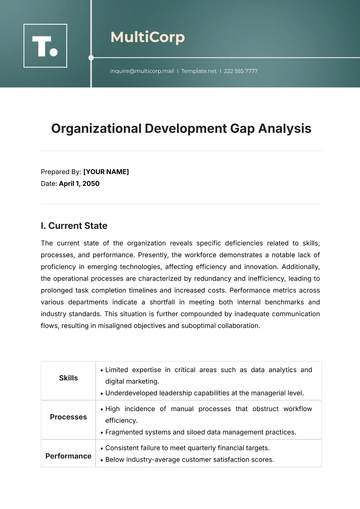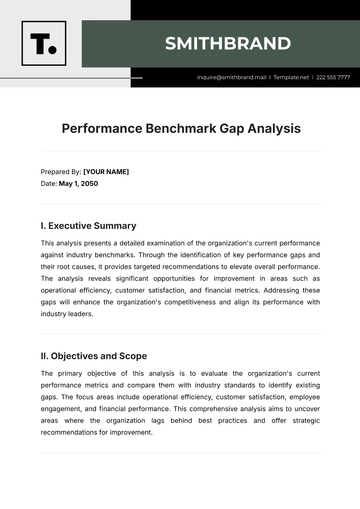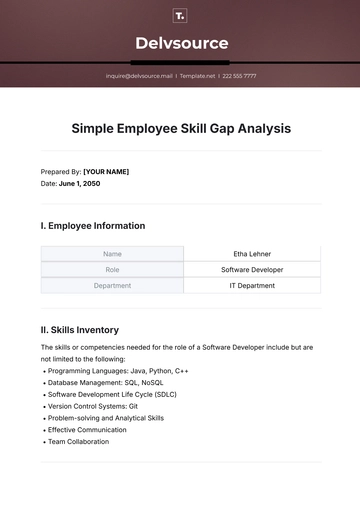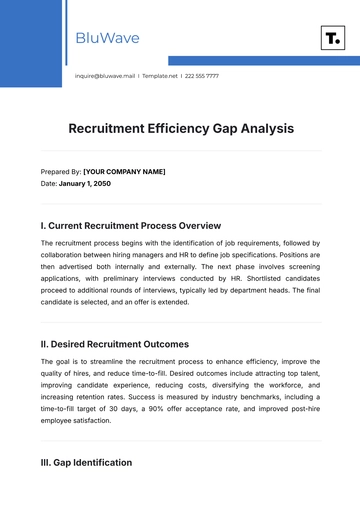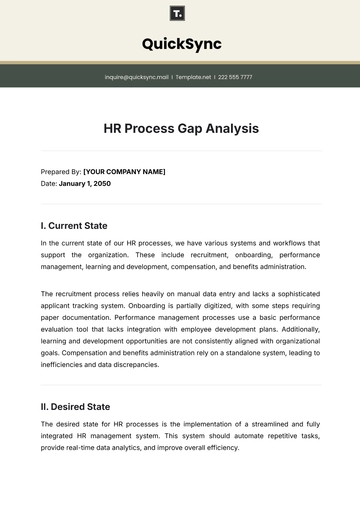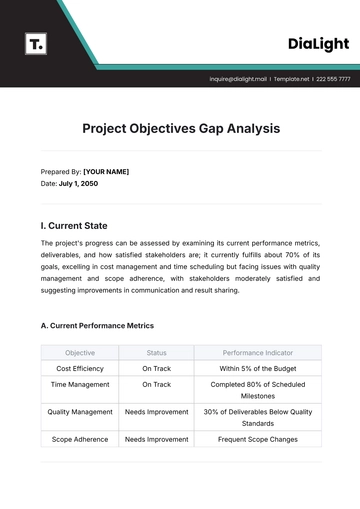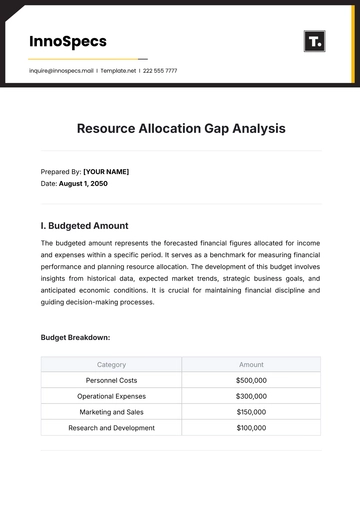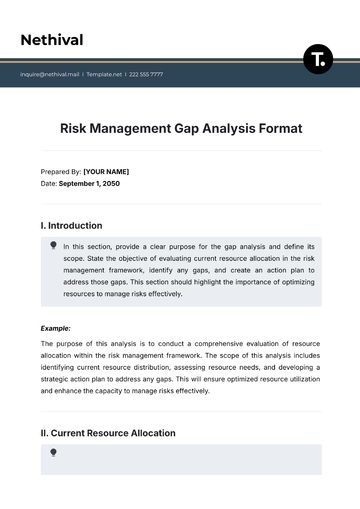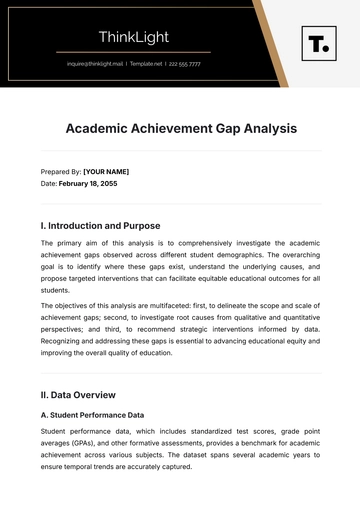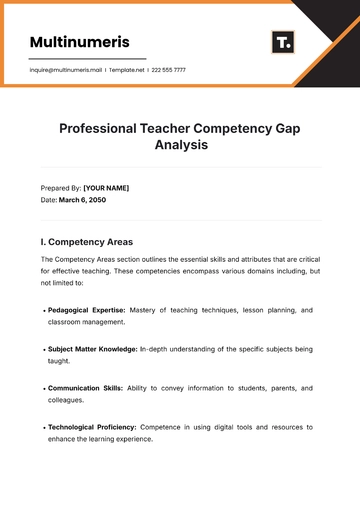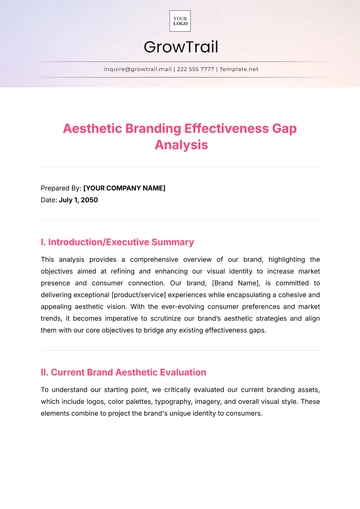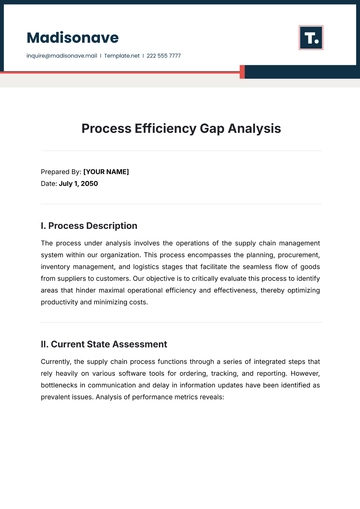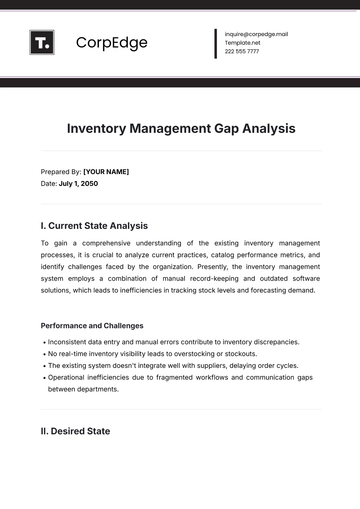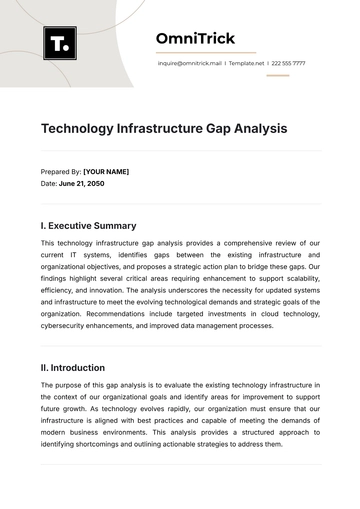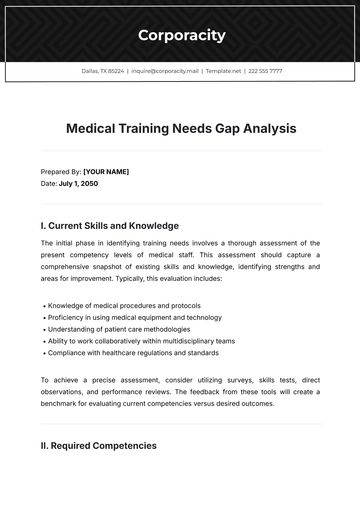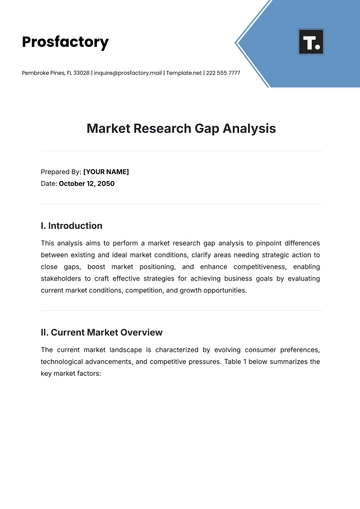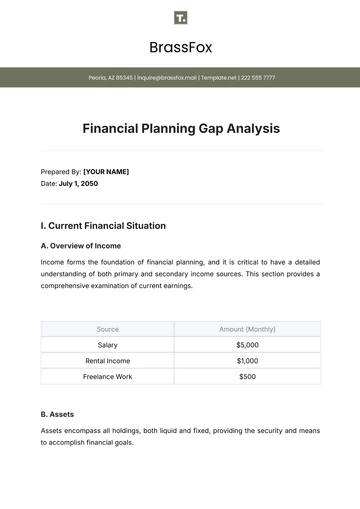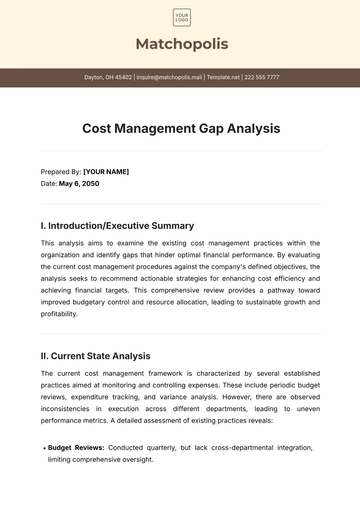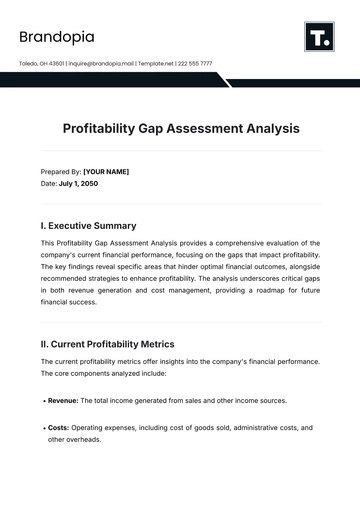Free Restaurant Financial Analysis
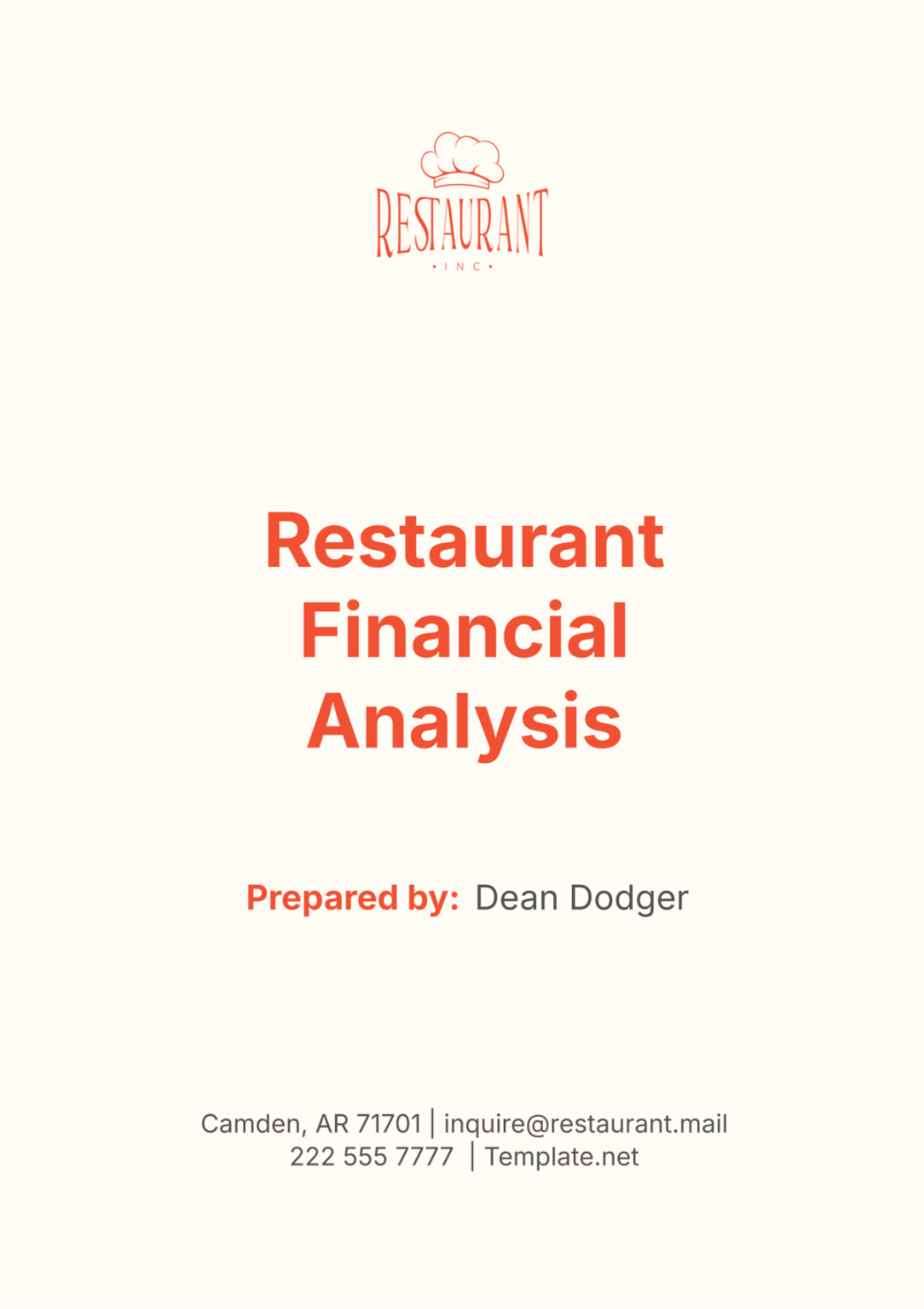
I. Introduction
A. Brief Overview of [Your Company Name]
[Your Company Name] is a well-established restaurant located in [City], known for its Italian fusion cuisine. Since its inception in [Year], the restaurant has garnered a loyal customer base and has been a popular choice for diners in the area.
B. Purpose of the Financial Analysis
The purpose of this financial analysis is to provide a comprehensive review of [Your Company Name]'s financial performance over the past year. By analyzing key financial statements and ratios, we aim to gain insights into the restaurant's profitability, liquidity, efficiency, and overall financial health. This analysis will help us make informed decisions and develop strategies to improve financial performance.
II. Financial Statements Analysis
A. Income Statement
1. Revenue Analysis
Category | Amount ($) |
|---|---|
Total Revenue | $1,200,000 |
Food Sales | $800,000 |
Beverage Sales | $300,000 |
Other Revenue | $100,000 |
2. Cost of Goods Sold (COGS) Analysis
Category | Amount ($) |
|---|---|
Food COGS | $320,000 |
Beverage COGS | $90,000 |
Other COGS | $30,000 |
Total COGS | $440,000 |
3. Gross Profit Margin Analysis
Gross Profit Margin = (Total Revenue - Total COGS) / Total Revenue
Gross Profit Margin = ($1,200,000 - $440,000) / $1,200,000 = 63.33%
4. Operating Expenses Analysis
Category | Amount ($) |
|---|---|
Labor Costs | $400,000 |
Rent | $120,000 |
Utilities | $30,000 |
Marketing | $50,000 |
Other Expenses | $100,000 |
Total Operating Expenses | $700,000 |
5. Net Profit Analysis
Net Profit = Total Revenue - Total COGS - Total Operating Expenses
Net Profit = $1,200,000 - $440,000 - $700,000 = $60,000
B. Balance Sheet
1. Assets Analysis
Category | Amount ($) |
|---|---|
Cash & Cash Equivalents | $50,000 |
Accounts Receivable | $20,000 |
Inventory | $40,000 |
Property, Plant & Equipment | $500,000 |
Other Assets | $30,000 |
Total Assets | $640,000 |
2. Liabilities Analysis
Category | Amount ($) |
|---|---|
Accounts Payable | $30,000 |
Short-term Loans | $50,000 |
Long-term Loans | $200,000 |
Other Liabilities | $20,000 |
Total Liabilities | $300,000 |
3. Equity Analysis
Category | Amount ($) |
|---|---|
Owner's Equity | $340,000 |
Retained Earnings | $0 |
Total Equity | $340,000 |
C. Cash Flow Statement
The Cash Flow Statement provides a detailed account of the cash inflows and outflows over a specific period. It is divided into three main sections: Operating Activities, Investing Activities, and Financing Activities. Understanding cash flow is critical for assessing the liquidity and financial health of [Your Company Name].
1. Operating Cash Flow Analysis
Operating cash flow measures the cash generated or used by [Your Company Name] in its core business operations. It indicates the ability of the restaurant to generate sufficient cash to maintain and grow operations.
Operating Cash Flow = Net Income + Depreciation - Change in Accounts Receivable - Change in Inventory + Change in Accounts Payable
Operating Cash Flow = $100,000 + $30,000 - $5,000 - $10,000 + $7,000 = $122,000
Category | Amount ($) |
|---|---|
Net Income | $100,000 |
Depreciation | $30,000 |
Change in Accounts Receivable | -$5,000 |
Change in Inventory | -$10,000 |
Change in Accounts Payable | $7,000 |
Total Operating Cash Flow | $122,000 |
2. Investing Cash Flow Analysis
Investing cash flow represents the cash used for investing in assets such as property, equipment, or other investments. It indicates the restaurant's investment in its long-term growth and expansion.
Investing Cash Flow = Cash from Sale of Assets - Cash Used for Investments
Investing Cash Flow = $10,000 - $50,000 = -$40,000
Category | Amount ($) |
|---|---|
Sale of Old Equipment | $10,000 |
Purchase of New Equipment | -$50,000 |
Total Investing Cash Flow | -$40,000 |
3. Financing Cash Flow Analysis
Financing cash flow shows the cash inflows and outflows related to financing activities, such as borrowing, repaying debt, or issuing equity. It provides insight into how [Your Company Name] finances its operations and growth.
Financing Cash Flow = Cash from Borrowing + Cash from Owners - Dividends Paid
Financing Cash Flow = $30,000 - $20,000 + $50,000 - $10,000 = $50,000
Category | Amount ($) |
|---|---|
Proceeds from Short-term Loans | $30,000 |
Repayment of Long-term Loans | -$20,000 |
Owner's Equity Contribution | $50,000 |
Dividends Paid | -$10,000 |
Total Financing Cash Flow | $50,000 |
Total Cash Flow:
Total Operating Cash Flow: $122,000
Total Investing Cash Flow: -$40,000
Total Financing Cash Flow: $50,000
Net Increase in Cash = Total Operating Cash Flow + Total Investing Cash Flow + Total Financing Cash Flow
Net Increase in Cash = $122,000 - $40,000 + $50,000 = $132,000
Category | Amount ($) |
|---|---|
Total Operating Cash Flow | $122,000 |
Total Investing Cash Flow | -$40,000 |
Total Financing Cash Flow | $50,000 |
Net Increase in Cash | $132,000 |
This detailed analysis of the cash flow statement provides a comprehensive view of [Your Company Name]'s cash management, highlighting its ability to generate cash from operations, invest in growth, and manage its financing activities effectively.
III. Financial Ratios Analysis
Financial ratios are useful tools for analyzing [Your Company Name] financial performance and assessing its financial health. They provide insights into various aspects of a company's operations, including profitability, liquidity, efficiency, and solvency. By comparing these ratios to industry benchmarks or historical data, stakeholders can evaluate the company's performance and make informed decisions.
A. Liquidity Ratios
1. Current Ratio
Current Ratio = Current Assets / Current Liabilities
Current Ratio = $500,000 / $250,000 = 2.0
2. Quick Ratio
Quick Ratio = (Current Assets - Inventory) / Current Liabilities
Inventory = $100,000
Quick Ratio = ($500,000 - $100,000) / $250,000 = 1.6
B. Profitability Ratios
1. Gross Profit Margin Ratio
Gross Profit Margin Ratio = (Total Revenue - COGS) / Total Revenue
Total Revenue = $1,000,000
COGS = $400,000
Gross Profit Margin Ratio = ($1,000,000 - $400,000) / $1,000,000 = 0.6 or 60%
2. Net Profit Margin Ratio
Net Profit Margin Ratio = Net Income / Total Revenue
Net Income = $100,000
Net Profit Margin Ratio = $100,000 / $1,000,000 = 0.1 or 10%
3. Return on Assets (ROA) Ratio
ROA Ratio = Net Income / Total Assets
Total Assets = $800,000
ROA Ratio = $100,000 / $800,000 = 0.125 or 12.5%
4. Return on Equity (ROE) Ratio
ROE Ratio = Net Income / Total Equity
Total Equity = $400,000
ROE Ratio = $100,000 / $400,000 = 0.25 or 25%
C. Efficiency Ratios
1. Inventory Turnover Ratio
Inventory Turnover Ratio = COGS / Average Inventory
Average Inventory = ($100,000 + $120,000) / 2 = $110,000
Inventory Turnover Ratio = $400,000 / $110,000 = 3.64
2. Accounts Receivable Turnover Ratio
Accounts Receivable Turnover Ratio = Total Revenue / Average Accounts Receivable
Average Accounts Receivable = ($20,000 + $25,000) / 2 = $22,500
Accounts Receivable Turnover Ratio = $1,000,000 / $22,500 = 44.44
3. Accounts Payable Turnover Ratio
Accounts Payable Turnover Ratio = Total Purchases / Average Accounts Payable
Total Purchases = $600,000
Average Accounts Payable = ($30,000 + $35,000) / 2 = $32,500
Accounts Payable Turnover Ratio = $600,000 / $32,500 = 18.46
D. Leverage Ratios
1. Debt-to-Equity Ratio
Debt-to-Equity Ratio = Total Debt / Total Equity
Total Debt = $300,000
Debt-to-Equity Ratio = $300,000 / $400,000 = 0.75
2. Interest Coverage Ratio
Interest Coverage Ratio = EBIT / Interest Expense
EBIT = $150,000
Interest Expense = $25,000
Interest Coverage Ratio = $150,000 / $25,000 = 6.0
IV. SWOT Analysis
A. Internal Factors
1. Strengths
Strong brand reputation: [Your Company Name] has built a strong reputation for delivering high-quality food and excellent service, resulting in a loyal customer base.
Unique menu offerings: The restaurant offers a unique and diverse menu that sets it apart from competitors, attracting food enthusiasts seeking new culinary experiences.
Efficient cost management: [Your Company Name] has implemented effective cost control measures, ensuring optimal use of resources and maintaining healthy profit margins.
2. Weaknesses
Reliance on seasonal trends: [Your Company Name] may experience fluctuations in revenue due to seasonal variations in customer traffic and demand.
Limited online presence: The restaurant's online presence is limited, potentially hindering its ability to reach a wider audience and compete in the digital marketplace.
B. External Factors
1. Opportunities
Market expansion: [Your Company Name] has the opportunity to expand its presence into new markets or locations, capitalizing on its existing success and reputation.
Introduction of online ordering system: By introducing an online ordering system, [Your Company Name] can cater to the growing demand for convenience among customers and increase sales.
2. Threats
Competition from new restaurants: The restaurant industry is highly competitive, and [Your Company Name] faces the threat of new entrants offering similar or better services.
Economic downturn: Economic downturns can impact consumer spending habits, potentially leading to a decline in sales for [Your Company Name].
V. Conclusion
A. Summary of Findings
Based on the SWOT analysis and financial performance review, [Your Company Name] has several key strengths that have contributed to its success, such as a strong brand reputation and unique menu offerings. However, there are also areas for improvement, such as addressing weaknesses like reliance on seasonal trends and enhancing the online presence.
B. Recommendations
Implement a marketing strategy to promote [Your Company Name]'s unique menu offerings and strengthen its brand reputation.
Invest in technology to improve the online ordering system and enhance the restaurant's digital presence.
Conduct regular market research to stay informed about emerging trends and customer preferences, allowing for proactive adjustments to the menu and services.
C. Future Outlook
With the right strategic decisions and investments, [Your Company Name] is well-positioned to capitalize on its strengths and opportunities, overcoming weaknesses and threats. By focusing on enhancing its competitive advantages and addressing areas for improvement, [Your Company Name] can achieve sustained growth and success in the future.
- 100% Customizable, free editor
- Access 1 Million+ Templates, photo’s & graphics
- Download or share as a template
- Click and replace photos, graphics, text, backgrounds
- Resize, crop, AI write & more
- Access advanced editor
This Restaurant Financial Analysis Template will help gain insights into your restaurant's financial health with this comprehensive template from Template.net. Customizable and editable, it helps you analyze revenue, expenses, and profitability trends. Use our Ai Editor Tool to easily input data and generate insightful reports. Make informed decisions to drive your restaurant's success.

